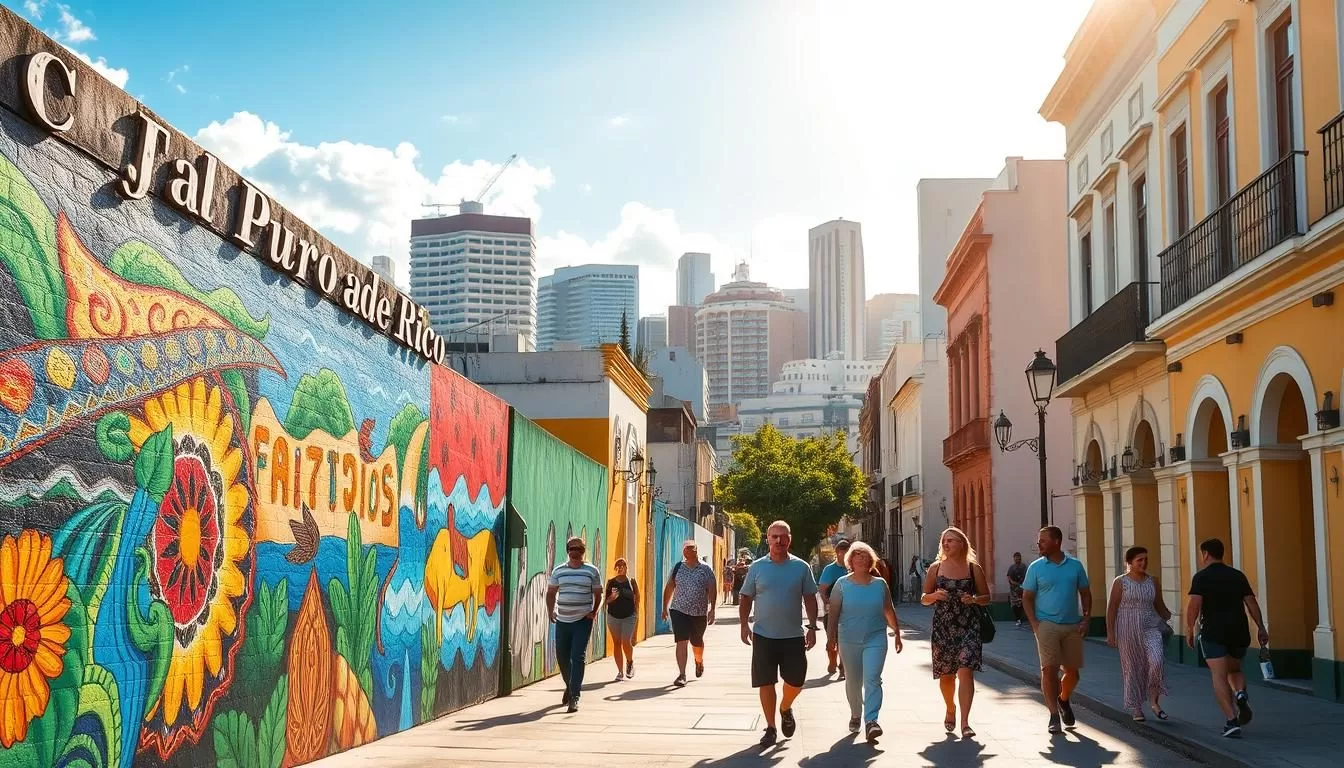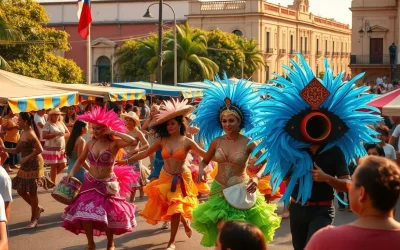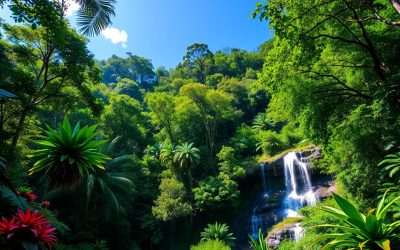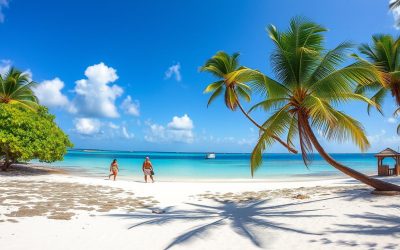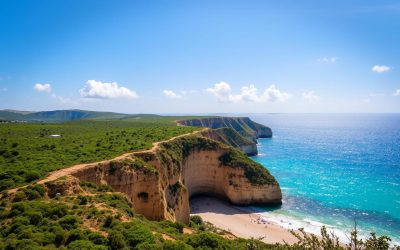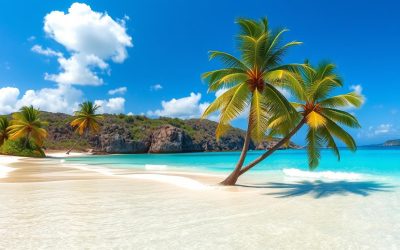Have you ever wondered how language shapes the identity of a place? On this vibrant island, the story of communication is deeply rooted in its rich history. Spanish dominates as the primary language, reflecting centuries of cultural influence. Yet, English also plays a significant role, adding another layer to the island’s linguistic landscape.
From the 15th century, Spanish settlers brought their tongue, blending it with indigenous and African influences. Later, English was introduced, creating a unique bilingual environment. Today, this blend of languages is a testament to the island’s diverse heritage and evolving identity.
Understanding these languages offers a window into the island’s past and present. It’s more than just words—it’s a reflection of culture, tradition, and connection. Ready to dive deeper? Let’s explore the fascinating world of language on this remarkable island.
Historical Evolution of Puerto Rican Languages
The story of language in Puerto Rico is a tale of resilience and blending. Over centuries, the island’s linguistic identity has been shaped by a mix of cultures, each leaving its mark. From Spanish colonization to African influences, the evolution of language here is a testament to its rich history.
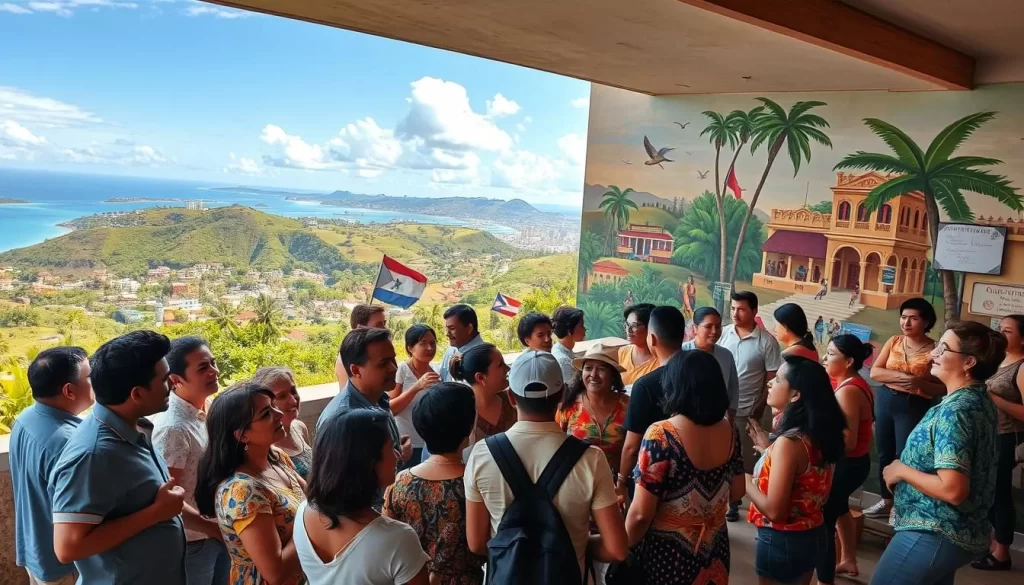
Influences from Spanish Colonization and Taíno Heritage
When Spanish settlers arrived in the 15th century, they brought their language, which quickly became dominant. However, the native Taíno people had their own tongue, and traces of it still survive today. Words like hamaca (hammock) and yuca (cassava) are examples of this enduring legacy.
Despite efforts to erase the Taíno language, its influence remains woven into everyday speech. This blending of cultures created a unique form of the Spanish language, one that reflects the island’s diverse roots.
The Role of African Languages in Shaping Puerto Rican Spanish
African languages also played a crucial role in shaping Puerto Rican Spanish. Enslaved Africans brought their dialects, which blended with Spanish and Taíno elements. This fusion is evident in the island’s pronunciation, vocabulary, and even music.
For example, words like guarapo (sugarcane juice) and mofongo (a traditional dish) have African origins. These linguistic contributions highlight the island’s multicultural heritage and the resilience of its people.
Understanding this history gives you a deeper appreciation of how language reflects identity. It’s more than just words—it’s a living connection to the past.
Current Linguistic Landscape in Puerto Rico
Language is a mirror of culture, and on this island, it reflects a vibrant bilingual reality. Over 95% of the population speaks Spanish, making it the dominant tongue in daily life. Yet, English plays a significant role, especially in education, business, and tourism. This blend creates a unique linguistic environment that shapes the island’s identity.
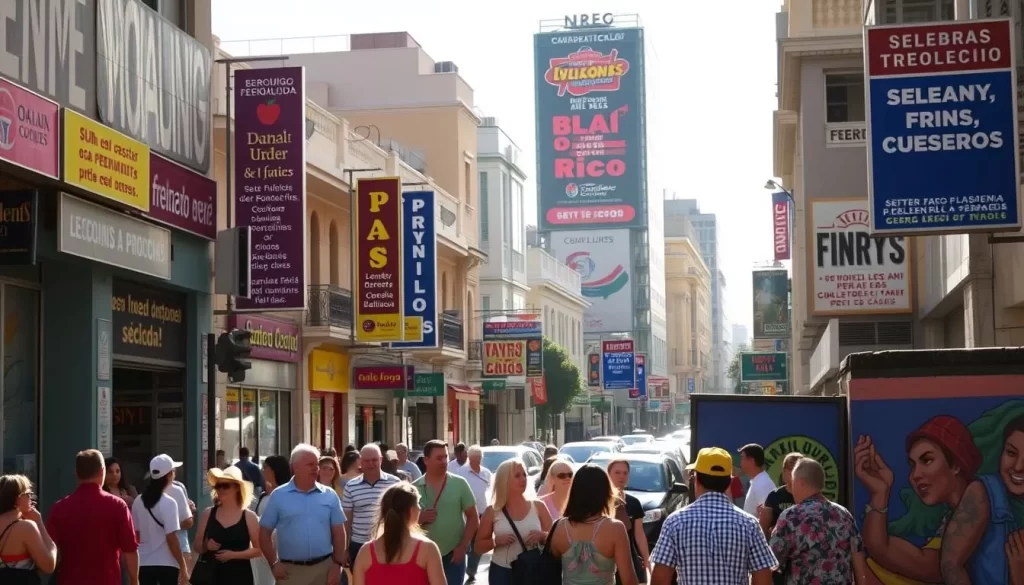
The Dominance of Spanish in Daily Life
Spanish is the heartbeat of communication here. From casual conversations to media and music, it’s woven into every aspect of life. Words and phrases often carry cultural nuances, making it more than just a language spoken—it’s a way of life. Even with the influence of English, Spanish remains the primary means of expression for most residents.
English in Education, Business, and Tourism
English has a strong presence in key areas. In schools, it’s widely taught, preparing students for global opportunities. The business sector often uses English, especially in industries connected to the united states. Tourism also relies heavily on English, ensuring visitors feel welcome and understood.
This bilingualism isn’t just practical—it’s a reflection of the island’s evolving identity. Whether at home, in public spaces, or online, the blend of Spanish and English creates a dynamic and inclusive environment.
Puerto Rico, United States: Official and Widely Spoken Languages
Language policies have shaped the way people communicate on the island for centuries. From colonial times to today, these rules reflect the island’s cultural resilience and adaptability. Understanding these shifts gives you insight into how language shapes identity and daily life.
Official Language Policies and Their Historical Shifts
Over the years, the government has played a key role in defining language use. In 1902, English was made a co-official language, but this decision faced resistance. By 1991, it was removed, only to be reinstated in 1993. These changes highlight the tension between preserving cultural identity and adapting to external influences.
Public schools, for example, have been a battleground for language policies. While instruction is primarily in Spanish, English is a compulsory subject. This balance ensures students are prepared for global opportunities while staying rooted in their heritage.
The Rise and Role of Spanglish in Modern Communication
Spanglish, a blend of Spanish and English, has emerged as a vibrant form of communication. It’s not just a mix of words but a reflection of the island’s dynamic culture. From casual conversations to media, Spanglish bridges the gap between tradition and modernity.
Popular culture showcases this blend beautifully. Songs, TV shows, and social media often feature Spanglish, making it a natural part of everyday life. This linguistic fusion highlights the island’s ability to adapt while staying true to its roots.
| Language Policy | Year | Impact |
|---|---|---|
| English as co-official language | 1902 | Increased bilingualism |
| Removal of English as official language | 1991 | Cultural preservation |
| Reinstatement of English | 1993 | Balanced bilingual approach |
These policies and the rise of Spanglish show how language evolves with time. It’s a testament to the island’s ability to embrace change while honoring its rich heritage.
Comparative Perspectives on Puerto Rican Spanish
What makes Puerto Rican Spanish stand out among other dialects? This variant of the Spanish language is rich in history and culture, offering a unique blend of influences. From its distinct vocabulary to its pronunciation, it’s a fascinating subject for anyone interested in linguistics.
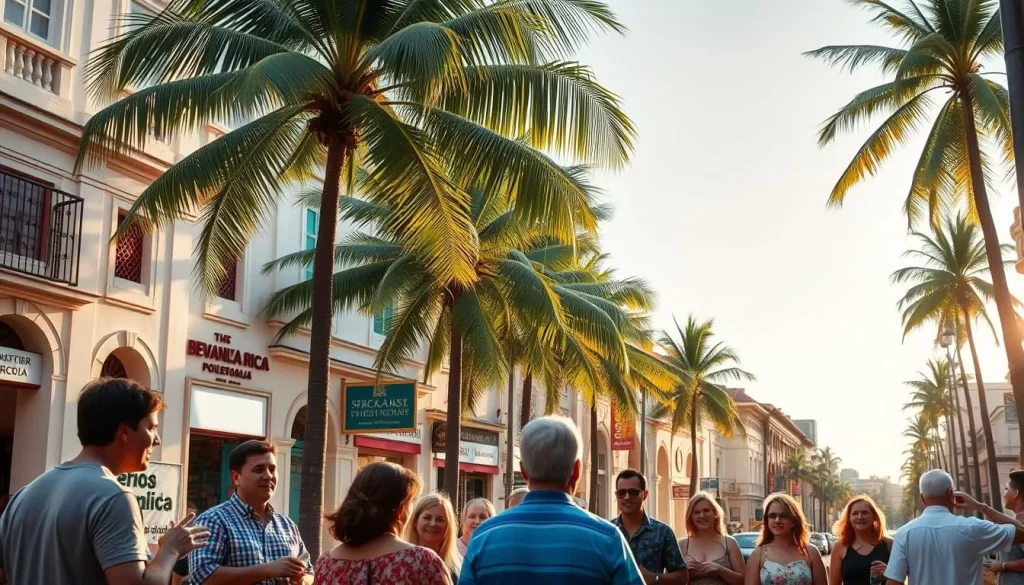
Differences Between Puerto Rican Spanish and Other Regional Variants
Puerto Rican Spanish has its own flavor, setting it apart from dialects in Mexico, Costa Rica, and other Spanish-speaking regions. One key difference lies in pronunciation. For example, the letter “r” is often softened or even dropped, creating a smoother sound.
Vocabulary also plays a big role. Words like guagua (bus) and zafacón (trash can) are unique to the island. These terms reflect the island’s cultural heritage and its blend of influences.
“Language is not just a tool for communication; it’s a reflection of identity and history.”
Another interesting aspect is the use of idioms. Phrases like estar en la luna (to be daydreaming) are common in Puerto Rican Spanish but might not be understood elsewhere. These expressions add depth to the language and highlight its uniqueness.
| Feature | Puerto Rican Spanish | Mexican Spanish |
|---|---|---|
| Pronunciation | Softer “r” sound | Stronger “r” sound |
| Vocabulary | Guagua (bus) | Camion (bus) |
| Idioms | Estar en la luna | Estar en las nubes |
Cultural influences have shaped Puerto Rican Spanish in profound ways. From Taíno roots to African and Spanish heritage, each layer adds to its richness. This blend makes it a vibrant and dynamic dialect.
So, why does this matter? Understanding these differences helps you appreciate the island’s culture and history. It’s more than just a word or phrase—it’s a window into a unique way of life.
Influences and Future Trends in Puerto Rico’s Language Use
How do external forces shape the way a nation communicates? For this vibrant island, the answer lies in a mix of political decisions, migration patterns, and cultural shifts. As debates around statehood continue, the linguistic identity of the population is evolving. Younger generations are increasingly embracing bilingualism, reshaping the future of language use.
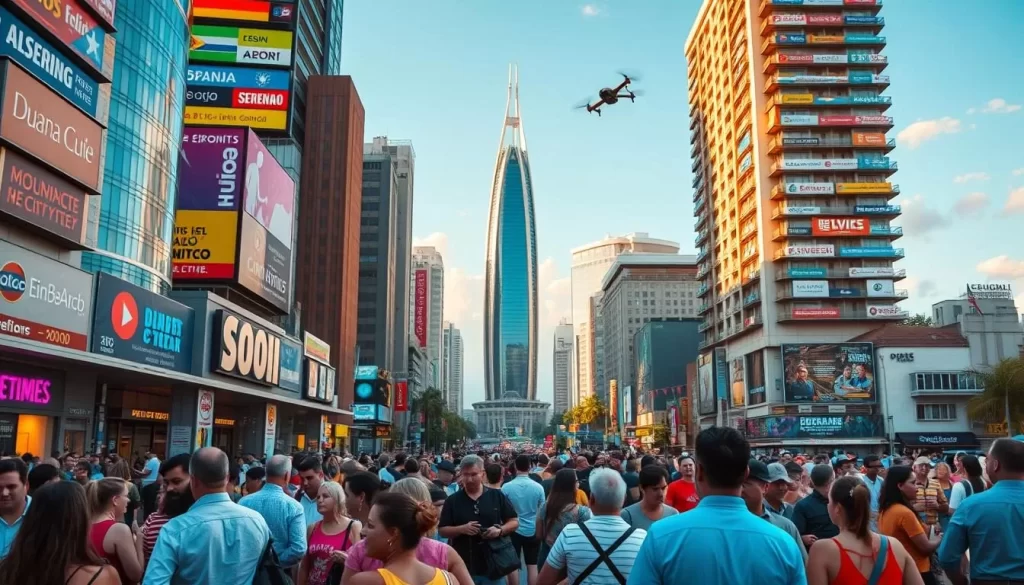
Impact of U.S. Policies and Statehood Debates
U.S. policies have long influenced the linguistic landscape here. Recent executive orders on official language use have sparked discussions about identity and culture. For many, the question of statehood is not just political—it’s deeply tied to how they express themselves.
If statehood becomes a reality, it could lead to a greater emphasis on English in public life. Schools might prioritize bilingual education, preparing students for opportunities both locally and abroad. This shift could redefine what it means to be a nation with a rich cultural tapestry.
Demographic Changes and Migration Patterns
Migration plays a key role in shaping language trends. Many people from the island move to the mainland, bringing their linguistic heritage with them. Over time, this exchange results in a blending of cultures and languages.
Younger populations are at the forefront of this change. They often favor bilingualism, seeing it as a way to connect with both their roots and the broader world. This trend is likely to grow, influencing everything from media to daily conversations.
“Language is not just a tool for communication; it’s a reflection of identity and history.”
As demographic shifts continue, the population’s linguistic preferences will evolve. This could lead to a more inclusive environment where multiple languages coexist harmoniously.
| Factor | Influence |
|---|---|
| U.S. Policies | Increased bilingual education |
| Migration | Blending of linguistic traditions |
| Statehood Debates | Potential shift in official language use |
Understanding these trends helps you see how language is more than just words—it’s a living, evolving part of culture. For further insights, explore the study on Politics and its Impact on Code-switching in Puerto.
Conclusion
Over the century, the linguistic identity of this territory has evolved, blending English and Spanish into a unique cultural tapestry. This fusion reflects the island’s rich history and vibrant everyday life. Despite challenges, the dual-language heritage remains a cornerstone of its identity.
As a territory, its language policies are deeply influenced by external factors. Yet, the community continues to embrace both languages, fostering a sense of unity and pride. Looking ahead, the balance between tradition and modernity will shape its future.
Understanding this dynamic helps you appreciate how language shapes identity. It’s more than words—it’s a reflection of resilience and connection. For deeper insights, explore the impact of language policies on cultural preservation.
The above is subject to change.
Check back often to TRAVEL.COM for the latest travel tips and deals.
